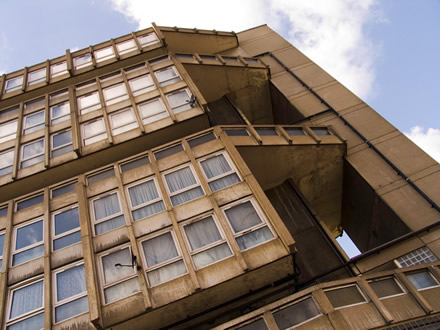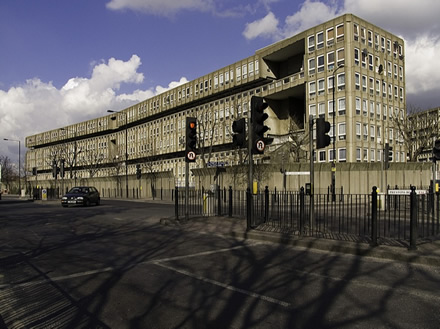

Another Brutalist landmark is under threat of demolition. This time it's Robin Hood Gardens in Poplar, East London. Designed by Alison and Peter Smithson, and completed in 1972, it looks likely that the local council, Tower Hamlets, will demolish the building and look to redevelop the site.
The only hope is that it receives listed building status, and becomes the protectorate of English Heritage. But conferring listed building status ultimately lies in the hands of the architecture minister, Margaret Hodge, who has weighed in with the following astonishing comment, in the recent issue of Grand Designs, and requoted in Building Design:
"When some concrete monstrosity - sorry, I mean modernist masterpiece - fails to make the cut despite having expert opinion behind it, let's find a third way. This is the 21st Century - a perfect digital image of the building, inside and out, could be retained forever."
This is either visionary prescience or the inane ramblings of a deranged lunatic. There is the germ of an amazing concept here - that we should create a National Digital Archive of high quality 3D models of our country's best buildings, which can be visited and explored in a virtual environment.
That this then presumably clears the way to demolish all that doesn't fit Hodge's aesthetic sensibilities is where she lurches from visionary to tyranny.
While the words 'conservation' and 'heritage' generally cause shivers to run down my spine, the revitalisation of the Brunswick Centre and to a lesser extent the redevelopment of Park Hill in Sheffield by Urban Splash, show that there is plenty of demand for some BoHo Brutalism. Superficially, it took little more than a Starbucks and a Waitrose to transform the concourse of the Brunswick Centre from a forlorn, windswept precinct to a popular urban hangout.
Goldfinger's masterful Trellick Tower was once also held with similar contempt as the Smithsons RHG, and now its flats are in high demand, often selling at above market rates. Likewise the Unite d'Habitation in Marseille, which was a powerful precedent for Robin Hood Gardens. Could Robin Hood Gardens also be turned into a desirable residence for owner occupiers? Unless and until more compelling alternatives are put forward, it should be saved.
(images from Flickr user Joseph Beuys Hat)
